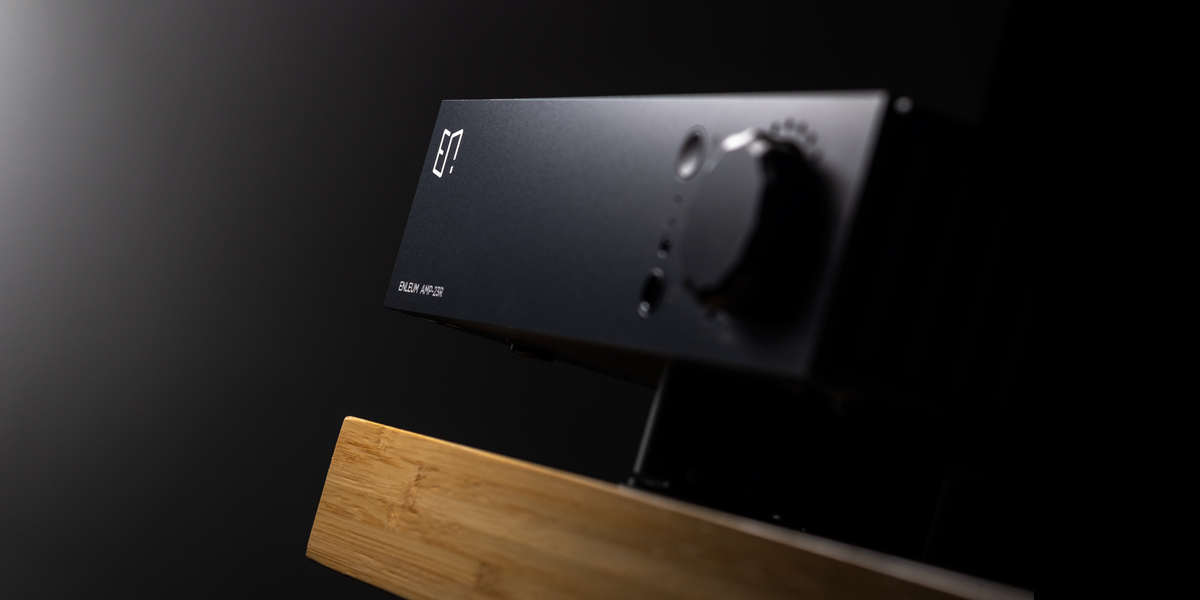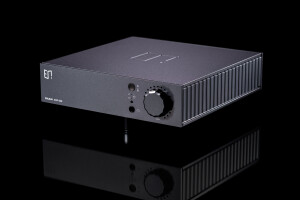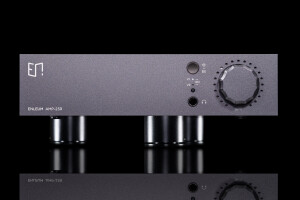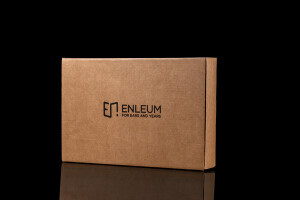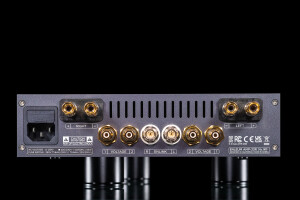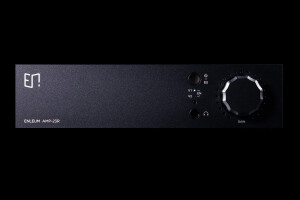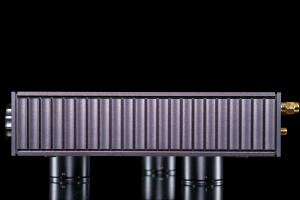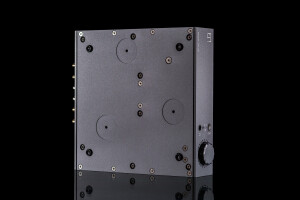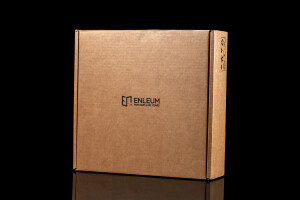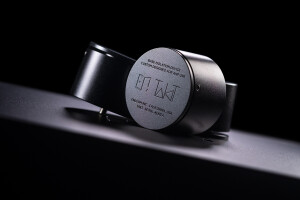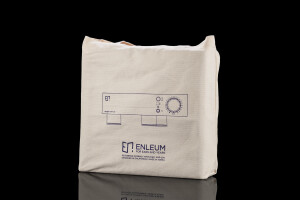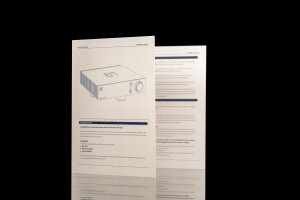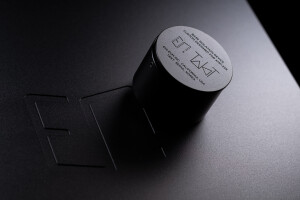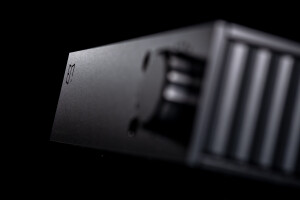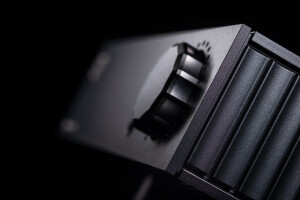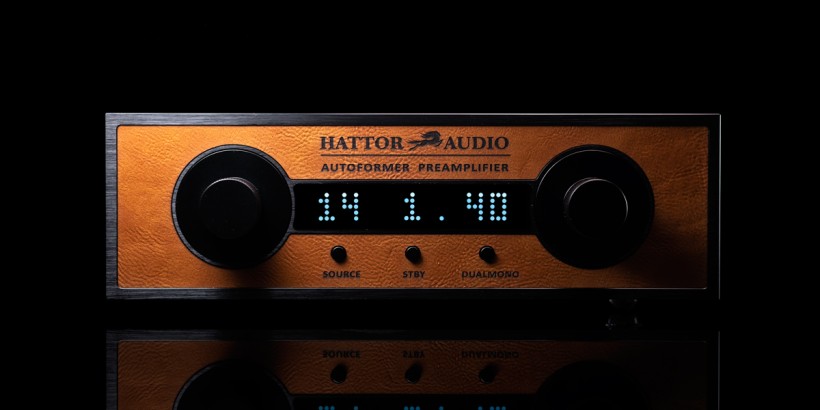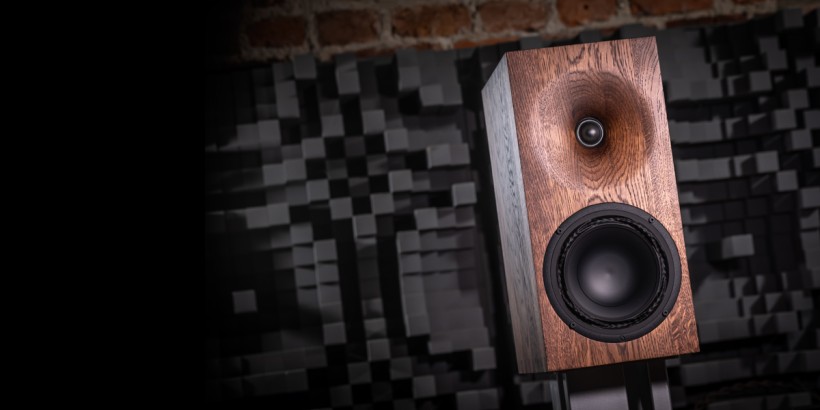In late 2021 Bakoon International’s founder Soo In Chae terminated it to instantly follow up with his new brand. Its introductory product – Enleum AMP-23R – is this report’s main dish. Enjoy!
25wpc bliss
If this story’s product seems unfamiliar, the odds are that you might’ve already stumbled upon its previous incarnation under a different banner. If you’re into headfi’s top shelf and one lucky HifiMan Susvara owner, you had to hear about it by now. Bakoon AMP-13R has been causing quite the stir in that sector for good two years or so. Perhaps this Srajan’s review and that story of my own had something to do with this, who knows. In any case, I’ve been using that tiny integrated monster ever since its arrival in early 2019, which is long enough to learn that it truly is one. Naturally I was fully on board upon hearing about its makers’ efforts to push that design further under a new name, but first let’s cover some basics.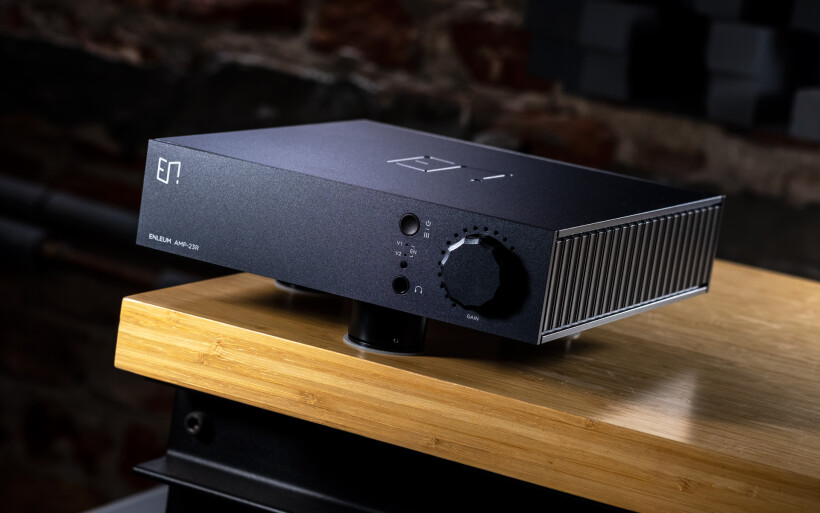 Japan is full of domestic audio houses known exclusively to audience settled there and Bakoon Products Co., Ltd. fits that description to a tee. In 2008 its founder Akira Nagai met an audio passionate/engineer Soo In Chae who had a firm idea how to introduce his work to the global market. That’s how Bakoon International came to be one year later in Seoul. Nagai’s current-mode Satri circuit was the backbone around which Soo In had built his own visually modern distinctively minimalist products that secured the well-deserved worldwide recognition and prestigious Red Dot design award. Now fast forward to late 2021. If you haven’t been up to speed with the industry’s gossip, Bakoon International is no more and here Srajan sheds some light on why that had to happen. Soo In’s next audio chapter christened Enleum continues where the previous one had ended. This review’s Enleum AMP-23R marks its first page. As for the company’s name itself, it comprises of words Enlightenment and eum that in Korean stands for sound. Clever, short, purposeful and easy to remember, isn’t it? But then again, considering Soo In’s obsession about simplicity that’s hardly a surprise. His newborn brand that arose from Bakoon’s ashes was destined to lock on fewer quality watts inside neatly styled compact packages rather than the other way around. Its introductory product makes that point more than well.
Japan is full of domestic audio houses known exclusively to audience settled there and Bakoon Products Co., Ltd. fits that description to a tee. In 2008 its founder Akira Nagai met an audio passionate/engineer Soo In Chae who had a firm idea how to introduce his work to the global market. That’s how Bakoon International came to be one year later in Seoul. Nagai’s current-mode Satri circuit was the backbone around which Soo In had built his own visually modern distinctively minimalist products that secured the well-deserved worldwide recognition and prestigious Red Dot design award. Now fast forward to late 2021. If you haven’t been up to speed with the industry’s gossip, Bakoon International is no more and here Srajan sheds some light on why that had to happen. Soo In’s next audio chapter christened Enleum continues where the previous one had ended. This review’s Enleum AMP-23R marks its first page. As for the company’s name itself, it comprises of words Enlightenment and eum that in Korean stands for sound. Clever, short, purposeful and easy to remember, isn’t it? But then again, considering Soo In’s obsession about simplicity that’s hardly a surprise. His newborn brand that arose from Bakoon’s ashes was destined to lock on fewer quality watts inside neatly styled compact packages rather than the other way around. Its introductory product makes that point more than well.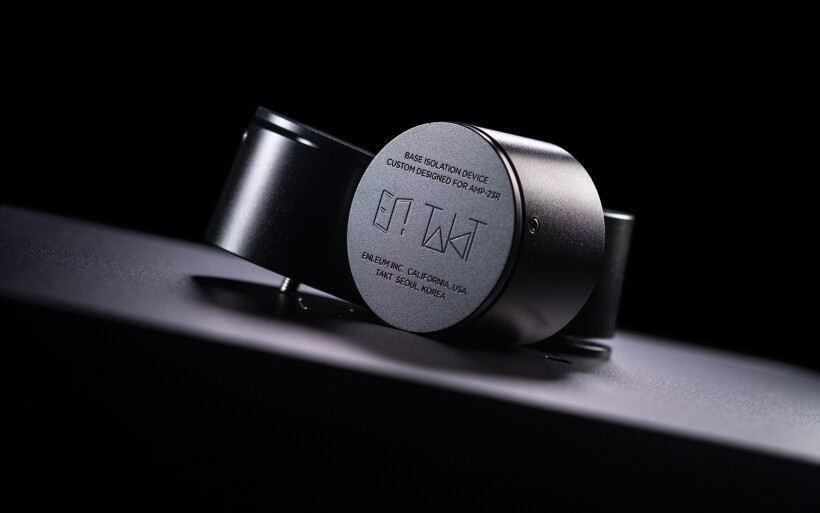 An outer cardboard’s foamy interior nested a robust linen carrier-bag with a box that housed the key ingredient and accessories. The smaller compartment just below stored three anti-vibration pucks plus matched rubber washers. The list of extras included a manual leaflet, plastic RC wand and CR50 battery for it, so everything that a product such as Enleum AMP-23R should include to get going. As far as topological facts go, this is a zero feedback wide bandwidth push-pull class AB integrated amplifier that weighs four kilograms and measures (W x D x H) 23 x 23 x 5.5cm. My loaner’s three optional footers increase its overall height by 2.75cm and add $500 extra to the bill. Further specs include 25/45wpc into 8/4Ω, 10Hz – 100kHz frequency response, 22.5dB voltage gain (7dB low gain for headphones), 6.3mm headfi out that does 4 watts into 60Ω loads and power draw of 30/100 watts at idle/max. Enleum AMP-23R sells for $5’000 and is available in one color only.
An outer cardboard’s foamy interior nested a robust linen carrier-bag with a box that housed the key ingredient and accessories. The smaller compartment just below stored three anti-vibration pucks plus matched rubber washers. The list of extras included a manual leaflet, plastic RC wand and CR50 battery for it, so everything that a product such as Enleum AMP-23R should include to get going. As far as topological facts go, this is a zero feedback wide bandwidth push-pull class AB integrated amplifier that weighs four kilograms and measures (W x D x H) 23 x 23 x 5.5cm. My loaner’s three optional footers increase its overall height by 2.75cm and add $500 extra to the bill. Further specs include 25/45wpc into 8/4Ω, 10Hz – 100kHz frequency response, 22.5dB voltage gain (7dB low gain for headphones), 6.3mm headfi out that does 4 watts into 60Ω loads and power draw of 30/100 watts at idle/max. Enleum AMP-23R sells for $5’000 and is available in one color only.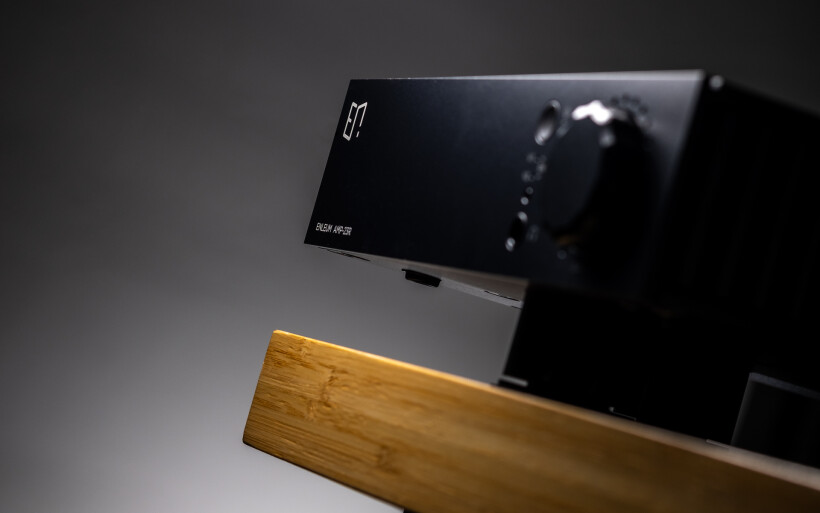 Enleum’s naming scheme first lists a product’s type followed by two digits that respectively specify its size plus circuit generation and then R to highlight reference bits inside. That’s how today’s AMP-23R and its predecessor Bakoon AMP-13R both feature the manufacturer’s 3rd gen internals and best available. Their styling differences aside, the former without its optional footers underneath even measures the same. If it’s not clear yet, these very similar highly advanced 2-in-1 headfi/speaker designs are for seasoned listeners who already know that 25wpc is all they might ever need for their sensitive speakers and most challenging headphone loads on the market. However, shared DNA doesn’t make Soo In’s latest and previous work identical. Internally Enleum may look like just a repackaged Bakoon but in reality it’s the latter’s more polished version. AMP-23R/AMP-13R’s respective SNR (1kHz, 8Ω, 5W A-weighted) is 96.5/95dB, RMS noise at 0dB gain is 17.5/65μV and 190/200μV at full output and max power (1% THD, 1kHz, 8Ω) is 28/27 watts. Today’s Ensence modules that are replaced JET-Satri circuits feature heatsinks plus optimized PCB and run on far higher voltage. That’s how the former’s THD (1kHz, 8Ω, 1W) remains within 0.25-0.4% from 1 to 25 watts, while the Bakoon AMP-13R scores almost constant 0.5% in the same range. Individuals after hard evidence should see noticeable progress upon looking at these specs.
Enleum’s naming scheme first lists a product’s type followed by two digits that respectively specify its size plus circuit generation and then R to highlight reference bits inside. That’s how today’s AMP-23R and its predecessor Bakoon AMP-13R both feature the manufacturer’s 3rd gen internals and best available. Their styling differences aside, the former without its optional footers underneath even measures the same. If it’s not clear yet, these very similar highly advanced 2-in-1 headfi/speaker designs are for seasoned listeners who already know that 25wpc is all they might ever need for their sensitive speakers and most challenging headphone loads on the market. However, shared DNA doesn’t make Soo In’s latest and previous work identical. Internally Enleum may look like just a repackaged Bakoon but in reality it’s the latter’s more polished version. AMP-23R/AMP-13R’s respective SNR (1kHz, 8Ω, 5W A-weighted) is 96.5/95dB, RMS noise at 0dB gain is 17.5/65μV and 190/200μV at full output and max power (1% THD, 1kHz, 8Ω) is 28/27 watts. Today’s Ensence modules that are replaced JET-Satri circuits feature heatsinks plus optimized PCB and run on far higher voltage. That’s how the former’s THD (1kHz, 8Ω, 1W) remains within 0.25-0.4% from 1 to 25 watts, while the Bakoon AMP-13R scores almost constant 0.5% in the same range. Individuals after hard evidence should see noticeable progress upon looking at these specs. Although AMP-23R’s dress code is brand new, it’s clear that the same outfit responsible for Bakoon’s spectacular visuals was involved. Today’s exterior is noticeably lighter on color, white silkscreen replaced orange and the manufacturer’s logo is also fresh. Attention to details, perfect assembly, top machining and freedom from visible bolts remained. This report’s chassis grew more massive and is simpler, but it’s very pretty to look at and more stable upon connecting heftier cables. The Bakoon’s Urushi-lacquered multi-function knob and two rows of volume LEDs are all gone. Now a pushbutton on the Enleum’s forehead cycles through inputs if pressed shortly and engages power on/standby upon a longer press. Two white dots just below highlight which one’s active and IR eye a hair lower talks to a responsive easy to use RC. Upon turning a large volume knob further to the right its embedded white dot travels around 21 neighboring openings. Spot on friction and firmness make this knurl very pleasant to use and far easier on volume readout versus the Bakoon’s LEDs. It feels and operates just like an analog pot to which it in fact connects, but a touch delayed resistor clicks tell us that “signal attenuation” happens elsewhere. More about that in a bit.
Although AMP-23R’s dress code is brand new, it’s clear that the same outfit responsible for Bakoon’s spectacular visuals was involved. Today’s exterior is noticeably lighter on color, white silkscreen replaced orange and the manufacturer’s logo is also fresh. Attention to details, perfect assembly, top machining and freedom from visible bolts remained. This report’s chassis grew more massive and is simpler, but it’s very pretty to look at and more stable upon connecting heftier cables. The Bakoon’s Urushi-lacquered multi-function knob and two rows of volume LEDs are all gone. Now a pushbutton on the Enleum’s forehead cycles through inputs if pressed shortly and engages power on/standby upon a longer press. Two white dots just below highlight which one’s active and IR eye a hair lower talks to a responsive easy to use RC. Upon turning a large volume knob further to the right its embedded white dot travels around 21 neighboring openings. Spot on friction and firmness make this knurl very pleasant to use and far easier on volume readout versus the Bakoon’s LEDs. It feels and operates just like an analog pot to which it in fact connects, but a touch delayed resistor clicks tell us that “signal attenuation” happens elsewhere. More about that in a bit.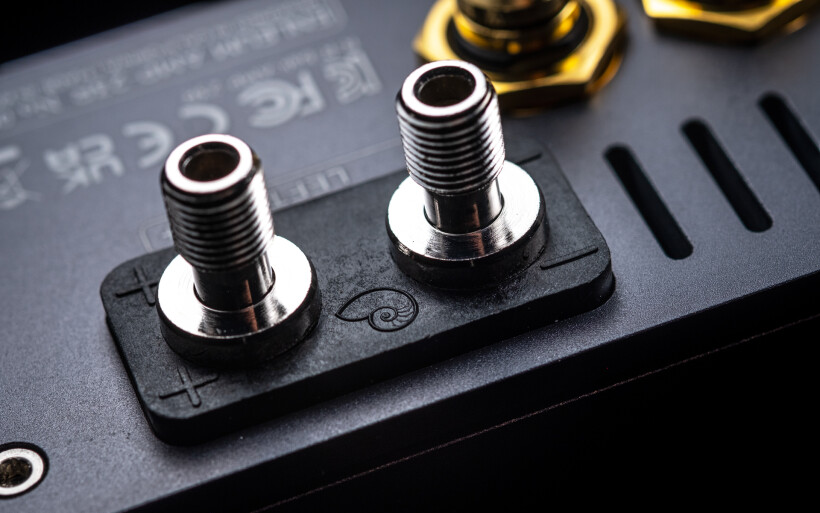 This report’s Enleum doesn’t feature separate headphone internals, which means that its auto-sensing 6.3mm out and speaker taps share the very same posh circuit and output power. That alone makes Soo In’s latest effort a beast for any regular headfi jobs no matter how difficult. It’d say no bueno only to electrostatic cans and Raal Requisite SR1a, so specialist types that demand according measures. The AMP-23R’s ribbed cheeks, front panel, clean top and remaining surfaces form a large heaat exchanger for output devices inside. The view under that hood reveals interior roomier and surrounded by separate walls bolted together versus tighter packed tunnels and compartments machined within AMP-13R’s unibody. The latter’s extruded chassis might seem fancier but is less practical. The Enleum’s larger dissipation surface and simpler frame make it noticeably cooler during usage and $1’000 lighter on the wallet, which is no spare change considering its retail price. Although some will find the Bakoon’s less conservative attire sexier, the Red Dot committee already awarded its successor.
This report’s Enleum doesn’t feature separate headphone internals, which means that its auto-sensing 6.3mm out and speaker taps share the very same posh circuit and output power. That alone makes Soo In’s latest effort a beast for any regular headfi jobs no matter how difficult. It’d say no bueno only to electrostatic cans and Raal Requisite SR1a, so specialist types that demand according measures. The AMP-23R’s ribbed cheeks, front panel, clean top and remaining surfaces form a large heaat exchanger for output devices inside. The view under that hood reveals interior roomier and surrounded by separate walls bolted together versus tighter packed tunnels and compartments machined within AMP-13R’s unibody. The latter’s extruded chassis might seem fancier but is less practical. The Enleum’s larger dissipation surface and simpler frame make it noticeably cooler during usage and $1’000 lighter on the wallet, which is no spare change considering its retail price. Although some will find the Bakoon’s less conservative attire sexier, the Red Dot committee already awarded its successor.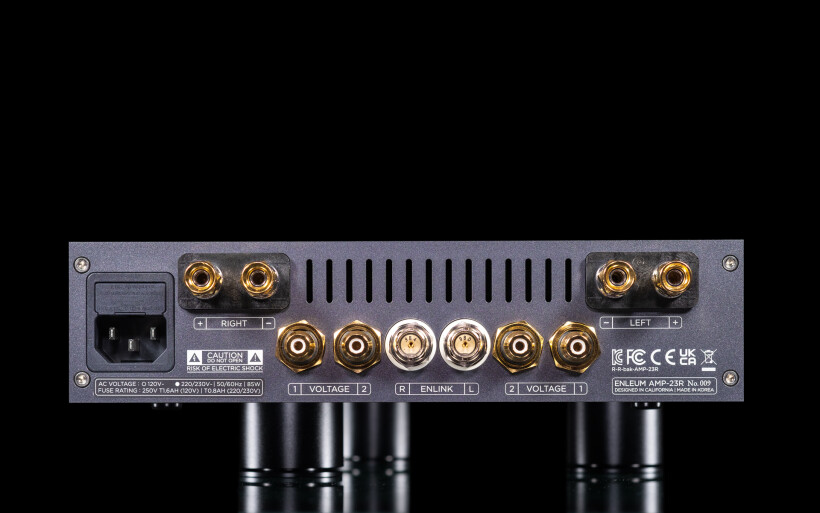 The Enleum’s business end houses a 100-240VAC adaptive IEC inlet that wants T1.6A/T0.8AL fuses for 100-120/200-240V ranges respectively. Luckily their compartment is now external as opposed to the AMP-13R’s storage that requires diving under its bonnet. Cardas binding posts in-between perforations near the upper ledge are mirrored and so are 2x voltage (10kΩ) RCA inputs below. Their current-mode (10Ω) BNC equivalent baptized ENlink inverts the usual by driving low input impedance from a high-Ω output a’la Audio-GD’s ACSS or CAST by Krell. To exploit that interface and reap associated benefits we’ll have to wait for Enleum’s own DAC. My loaner’s lower left corner shows its serial number, design in California and Korean assembly. Its underbelly accommodates multiple bolts, four tiny standard-issue rubber washers and three circular shallow cavities with threaded openings for optional anti-vibration cylinders tailored by South Korea’s TAKT specifically for AMP-23R’s mass. Their internal shapes calculated precisely for that task result in some play without any springy actions and reactions, which effectively makes them hard resonance sinks.
The Enleum’s business end houses a 100-240VAC adaptive IEC inlet that wants T1.6A/T0.8AL fuses for 100-120/200-240V ranges respectively. Luckily their compartment is now external as opposed to the AMP-13R’s storage that requires diving under its bonnet. Cardas binding posts in-between perforations near the upper ledge are mirrored and so are 2x voltage (10kΩ) RCA inputs below. Their current-mode (10Ω) BNC equivalent baptized ENlink inverts the usual by driving low input impedance from a high-Ω output a’la Audio-GD’s ACSS or CAST by Krell. To exploit that interface and reap associated benefits we’ll have to wait for Enleum’s own DAC. My loaner’s lower left corner shows its serial number, design in California and Korean assembly. Its underbelly accommodates multiple bolts, four tiny standard-issue rubber washers and three circular shallow cavities with threaded openings for optional anti-vibration cylinders tailored by South Korea’s TAKT specifically for AMP-23R’s mass. Their internal shapes calculated precisely for that task result in some play without any springy actions and reactions, which effectively makes them hard resonance sinks.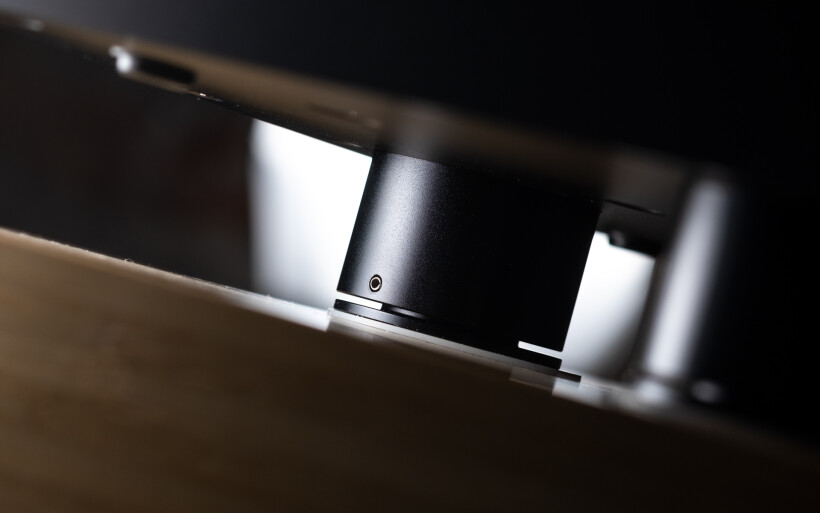 Although Enleum AMP-23R’s skill set and MO imply an integrated affair, at its core it’s a stereo power amp controlled via a user-selectable truly variable voltage gain. Each step on its knob-coupled resistor matrix generates one fixed voltage that determines amplification factor thus signal strength instead of maxing out and then trimming its level. This route makes AMP-23R the perfect candidate for standalone preamps. It also removes resistance and losses introduced by attenuators, maintains constant SNR at all voltage values and explains why under the Enleum’s knurl we see the word gain not volume. To simplify, if the usual integrated suspects rely on volume attenuation plus two or three optional gain settings to pull desirable SPL, Soo In’s latest has 1’024 of them to do the same without attenuation.
Although Enleum AMP-23R’s skill set and MO imply an integrated affair, at its core it’s a stereo power amp controlled via a user-selectable truly variable voltage gain. Each step on its knob-coupled resistor matrix generates one fixed voltage that determines amplification factor thus signal strength instead of maxing out and then trimming its level. This route makes AMP-23R the perfect candidate for standalone preamps. It also removes resistance and losses introduced by attenuators, maintains constant SNR at all voltage values and explains why under the Enleum’s knurl we see the word gain not volume. To simplify, if the usual integrated suspects rely on volume attenuation plus two or three optional gain settings to pull desirable SPL, Soo In’s latest has 1’024 of them to do the same without attenuation. Enleum AMP-23R’s inside is a familiar sight. Its PSU is linear and based on Avel Lindberg’s toroidal transformer. Soo In’s output devices of choice strapped to the product’s underside are two push/pull common-source lateral Exicon Mosfets per channel. The main i/o board accommodates a small PCB with 10 software-controlled relays that execute 1’024 (2^10=1024) gain steps and take temperature and rotation angle errors into account. One full turn of the volume control registers 57 clicks and its knob connects to a motorized Alps pot used as a convenient interface ingredient outside the signal path. Each radiator comprised of small cubes hides one critical current-mode discrete ENsence input stage per channel. After these modules there’s the JET2 bias controller that combines ADC/DAC and MPU to instantly track all thermal shifts and maintain bias level regardless of load and temperature. All that translates into rare circuit cleverness that makes Enleum AMP-23R extremely responsive and commensurably gifted on sonics, but all that was known long before its arrival. Now it’s time to investigate how it fares against its older sibling.
Enleum AMP-23R’s inside is a familiar sight. Its PSU is linear and based on Avel Lindberg’s toroidal transformer. Soo In’s output devices of choice strapped to the product’s underside are two push/pull common-source lateral Exicon Mosfets per channel. The main i/o board accommodates a small PCB with 10 software-controlled relays that execute 1’024 (2^10=1024) gain steps and take temperature and rotation angle errors into account. One full turn of the volume control registers 57 clicks and its knob connects to a motorized Alps pot used as a convenient interface ingredient outside the signal path. Each radiator comprised of small cubes hides one critical current-mode discrete ENsence input stage per channel. After these modules there’s the JET2 bias controller that combines ADC/DAC and MPU to instantly track all thermal shifts and maintain bias level regardless of load and temperature. All that translates into rare circuit cleverness that makes Enleum AMP-23R extremely responsive and commensurably gifted on sonics, but all that was known long before its arrival. Now it’s time to investigate how it fares against its older sibling.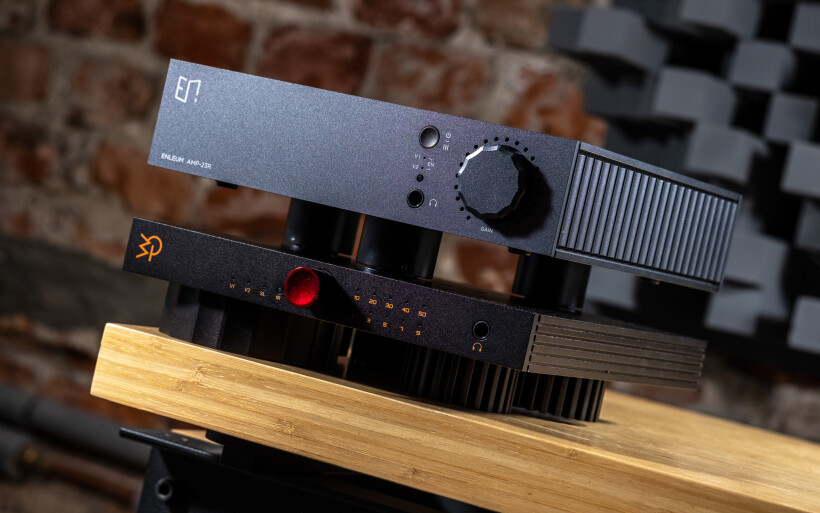 Both amps’ inlets saw a Boenicke Power Gate’s captive M2 cords and either one or the other connected to my DAC via LessLoss’ latest Entropic-processed C-MARC RCAs. Swapping these and Boenicke S3 speaker cables that went into sound|kaos Vox 3afw monitors was all it took to quickly move from one amp to the other. Their alike output power also rendered volume matching unnecessary. Prior to explaining how these integrated affairs differ, let’s first backtrack to the small Bakoon’s profile. It all started with sound|kaos Libération dipoles their maker Martin Gateley provided with the compact Bakoon. Along with that assignment came my understanding that this tiny integrated amp had to have its own story. With Martin’s load it very easily outclassed a twice as costly Trilogy 925 on openness and agility, while a somewhat similarly profiled Kinki Studio EX-M1 sounded far drier in comparison. Although the latter deck and AMP-13 shared alike Exicon Mosfets and quick open spatially grand profile, their similarities ended there.
Both amps’ inlets saw a Boenicke Power Gate’s captive M2 cords and either one or the other connected to my DAC via LessLoss’ latest Entropic-processed C-MARC RCAs. Swapping these and Boenicke S3 speaker cables that went into sound|kaos Vox 3afw monitors was all it took to quickly move from one amp to the other. Their alike output power also rendered volume matching unnecessary. Prior to explaining how these integrated affairs differ, let’s first backtrack to the small Bakoon’s profile. It all started with sound|kaos Libération dipoles their maker Martin Gateley provided with the compact Bakoon. Along with that assignment came my understanding that this tiny integrated amp had to have its own story. With Martin’s load it very easily outclassed a twice as costly Trilogy 925 on openness and agility, while a somewhat similarly profiled Kinki Studio EX-M1 sounded far drier in comparison. Although the latter deck and AMP-13 shared alike Exicon Mosfets and quick open spatially grand profile, their similarities ended there.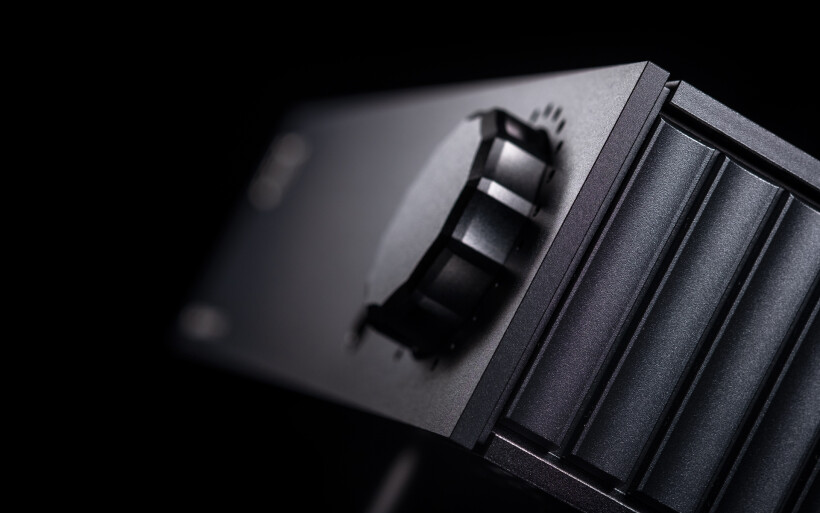 Martin’s floorstander speakers quickly revealed the Kinki’s more lit up, nervous, shinier and forward attitude. The Bakoon had its background blacker and tonal center of gravity lower to feel heftier in spite of lesser power, but it also held back no punches on spatial might and readiness to fully stretch dynamic contrasts of large orchestral schemes. On these fronts the AMP-13R was fully awake, vigorous, lively and all in all remarkable, not sloppy at all. Its lightning-fast response to all challenges combined with superb textural qualities, perfect tonal evenness, bonkers imaging, off-charts momentum and effortlessness had me thoroughly impressed. No wonder Martin liked the petite Bakoon so much with his sensitive speakers.
Martin’s floorstander speakers quickly revealed the Kinki’s more lit up, nervous, shinier and forward attitude. The Bakoon had its background blacker and tonal center of gravity lower to feel heftier in spite of lesser power, but it also held back no punches on spatial might and readiness to fully stretch dynamic contrasts of large orchestral schemes. On these fronts the AMP-13R was fully awake, vigorous, lively and all in all remarkable, not sloppy at all. Its lightning-fast response to all challenges combined with superb textural qualities, perfect tonal evenness, bonkers imaging, off-charts momentum and effortlessness had me thoroughly impressed. No wonder Martin liked the petite Bakoon so much with his sensitive speakers.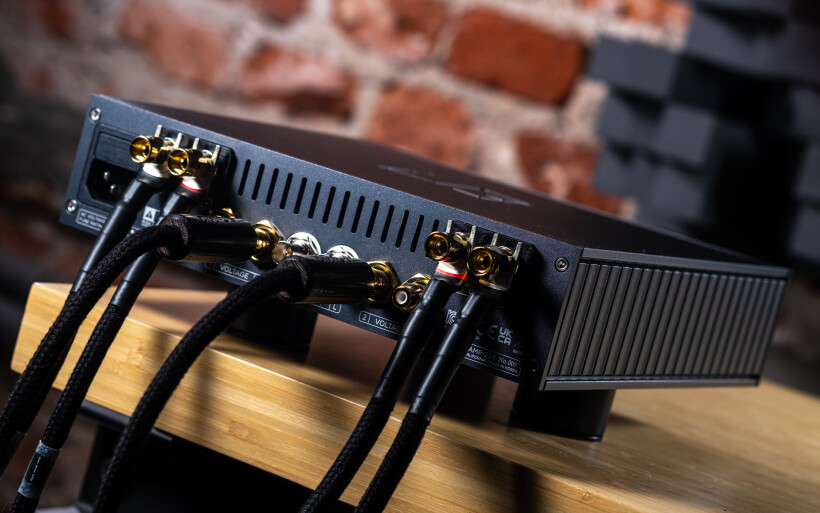 Interestingly, at first the EX-M1 with Libération struck me as more explosive versus the Bakoon; beefier on bass, airier and more direct. Not for long. Although early on I took this disposition as a higher fun factor, rather quickly it revealed as a more juvenile less posh voicing that introduced fatigue. Meanwhile, the AMP-13R remained pleasantly relaxed and substantial all the time. The more both integrated machines had clashed, the bigger the gap between them was on quality and balance. The EX-M1 emerged as texturally drier and more pale, less orderly and with its upper bass boosted to unmask hollowness there. Newcomers to the hobby would take this approach as more visceral, snappier and surgical, while trained ears would consider the Bakoon as more calm, composed, meticulous, tactile and all in all significantly better where it matters most. Its core was as dynamically gifted and vivacious as it was quicksilvery and long on decay loaded with easy detail. Top shelf on order, control, momentum, fabulous colors and overall maturity followed. Simply put, the AMP-13R went far beyond just introductory flashiness and directness alone and that made all the difference.
Interestingly, at first the EX-M1 with Libération struck me as more explosive versus the Bakoon; beefier on bass, airier and more direct. Not for long. Although early on I took this disposition as a higher fun factor, rather quickly it revealed as a more juvenile less posh voicing that introduced fatigue. Meanwhile, the AMP-13R remained pleasantly relaxed and substantial all the time. The more both integrated machines had clashed, the bigger the gap between them was on quality and balance. The EX-M1 emerged as texturally drier and more pale, less orderly and with its upper bass boosted to unmask hollowness there. Newcomers to the hobby would take this approach as more visceral, snappier and surgical, while trained ears would consider the Bakoon as more calm, composed, meticulous, tactile and all in all significantly better where it matters most. Its core was as dynamically gifted and vivacious as it was quicksilvery and long on decay loaded with easy detail. Top shelf on order, control, momentum, fabulous colors and overall maturity followed. Simply put, the AMP-13R went far beyond just introductory flashiness and directness alone and that made all the difference. The Bakoon against Kinki’s product communicated its own boldness via substantially higher sophistication, smoothness and extremely rare nobility. This was the battle of brute force and quantity against quality and refinement. Here I mean tactility, textural substance and pleasant moisture on connective tissues versus chiseling, disconnected virtual outlines, dehydration and final polishing clearly not there. To follow in that vein, the Bakoon’s aural landscapes accommodated virtual frames more orderly, physical, saturated and precise, while the Kinki’s priority list narrowed down to directness, closeness and chiseled outlines. The former’s tonal evenness, humidity and subtle yet substantial brilliance region fought against boosted bass and all above slimmer, shorter, more tense and lackluster on internal filler. The AMP-13R represented order, inviting blackness, spot on radiance and seasoned heft free from dilution to secure perfect balance, whilst its rival too intense on upper bass and underwhelmed above was overcooked in that sense.
The Bakoon against Kinki’s product communicated its own boldness via substantially higher sophistication, smoothness and extremely rare nobility. This was the battle of brute force and quantity against quality and refinement. Here I mean tactility, textural substance and pleasant moisture on connective tissues versus chiseling, disconnected virtual outlines, dehydration and final polishing clearly not there. To follow in that vein, the Bakoon’s aural landscapes accommodated virtual frames more orderly, physical, saturated and precise, while the Kinki’s priority list narrowed down to directness, closeness and chiseled outlines. The former’s tonal evenness, humidity and subtle yet substantial brilliance region fought against boosted bass and all above slimmer, shorter, more tense and lackluster on internal filler. The AMP-13R represented order, inviting blackness, spot on radiance and seasoned heft free from dilution to secure perfect balance, whilst its rival too intense on upper bass and underwhelmed above was overcooked in that sense. It’s only natural that after reading up to this point one might now see Kinki Studio EX-M1 as a subpar specimen, but this sanely priced integrated amp proved me on many occasions that it’s no pushover. Still, entire systems make sound, not individual components. That said, the Bakoon with sound|kaos speakers simply was a terrific highly synergistic match beyond reach of three other amps I had at my disposal at that time. Loads in demand of power and damping higher than the Bakoon’s wouldn’t have been as happy about this marvel as much as Libération dipoles were. That’s just the nature of it. Still, its tangible, lively, radiant, moist, earthly, expressive and resonant character particularly sensible on minimalist sensual acoustic and vocal jobs had me in awe for nearly three years.
It’s only natural that after reading up to this point one might now see Kinki Studio EX-M1 as a subpar specimen, but this sanely priced integrated amp proved me on many occasions that it’s no pushover. Still, entire systems make sound, not individual components. That said, the Bakoon with sound|kaos speakers simply was a terrific highly synergistic match beyond reach of three other amps I had at my disposal at that time. Loads in demand of power and damping higher than the Bakoon’s wouldn’t have been as happy about this marvel as much as Libération dipoles were. That’s just the nature of it. Still, its tangible, lively, radiant, moist, earthly, expressive and resonant character particularly sensible on minimalist sensual acoustic and vocal jobs had me in awe for nearly three years. Although in my previous reviews I was already vocal that the Bakoon loaner quickly secured the position of my very best audio product regardless of type or price, let me stress that again. I cherish this tiny little thing more than my DAC, amps, preamp, speakers, key cables and all else without exceptions. Although on that front it stands tall as quite frankly undefeatable, it’s also one of the most affordable audio components I have, which I find rather funny. A triode-like character that includes high illumination, quick reflexes, effortlessness, wide dynamic contrasts, elasticity, admirable substance plus exceptional smoothness, openness, pronunciation and insight all dressed in a petite package that’s noise-free and gorgeous to look at formed the recipe to win over this reporter. On a side note, the two products that struck me as alike-voiced were far dearer and more powerful Nagra Classic INT and Alberto Guerra’s AGD Production Vivace monos. That aside, thus far this story was all about the Bakoon because Enleum offers as much, simple as that. Their sonic cores are identical, so upon replacing one product’s name with the other all the above applies, but Enleum AMP-23R managed to take a step further on several counts still.
Although in my previous reviews I was already vocal that the Bakoon loaner quickly secured the position of my very best audio product regardless of type or price, let me stress that again. I cherish this tiny little thing more than my DAC, amps, preamp, speakers, key cables and all else without exceptions. Although on that front it stands tall as quite frankly undefeatable, it’s also one of the most affordable audio components I have, which I find rather funny. A triode-like character that includes high illumination, quick reflexes, effortlessness, wide dynamic contrasts, elasticity, admirable substance plus exceptional smoothness, openness, pronunciation and insight all dressed in a petite package that’s noise-free and gorgeous to look at formed the recipe to win over this reporter. On a side note, the two products that struck me as alike-voiced were far dearer and more powerful Nagra Classic INT and Alberto Guerra’s AGD Production Vivace monos. That aside, thus far this story was all about the Bakoon because Enleum offers as much, simple as that. Their sonic cores are identical, so upon replacing one product’s name with the other all the above applies, but Enleum AMP-23R managed to take a step further on several counts still.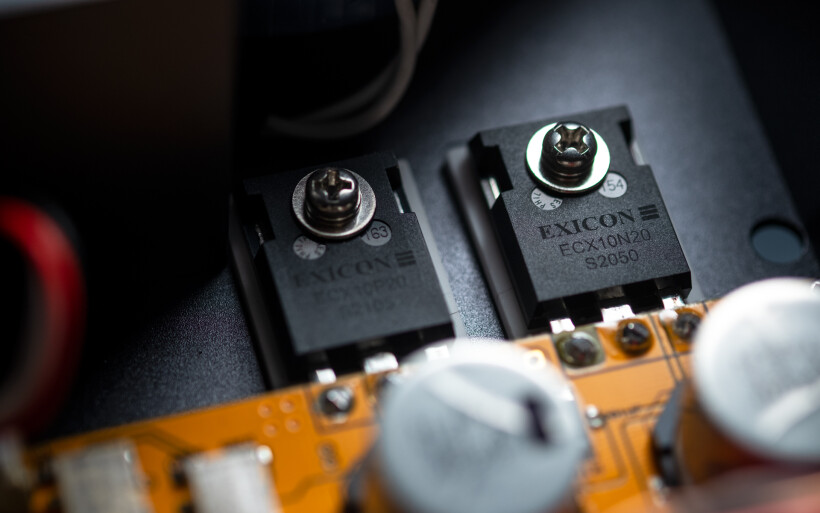 As much as I try to keep away from publications about products I’m about to tackle myself, Srajan’s engaging Enleum origin story didn’t stop me from continuing the read upon seeing his formal review of that product. More grounded vibe, lower noise floor and lesser emphasis on speed and edges versus the Bakoon was the takeaway of that forbidden chapter. Needless to say, knowing it had me biased, guilty as charged. Still, the question was whether at my place I’d perhaps hear anything new. Srajan’s and mine repertoires aren’t the same and that alone can result in different angles on alike observations.
As much as I try to keep away from publications about products I’m about to tackle myself, Srajan’s engaging Enleum origin story didn’t stop me from continuing the read upon seeing his formal review of that product. More grounded vibe, lower noise floor and lesser emphasis on speed and edges versus the Bakoon was the takeaway of that forbidden chapter. Needless to say, knowing it had me biased, guilty as charged. Still, the question was whether at my place I’d perhaps hear anything new. Srajan’s and mine repertoires aren’t the same and that alone can result in different angles on alike observations.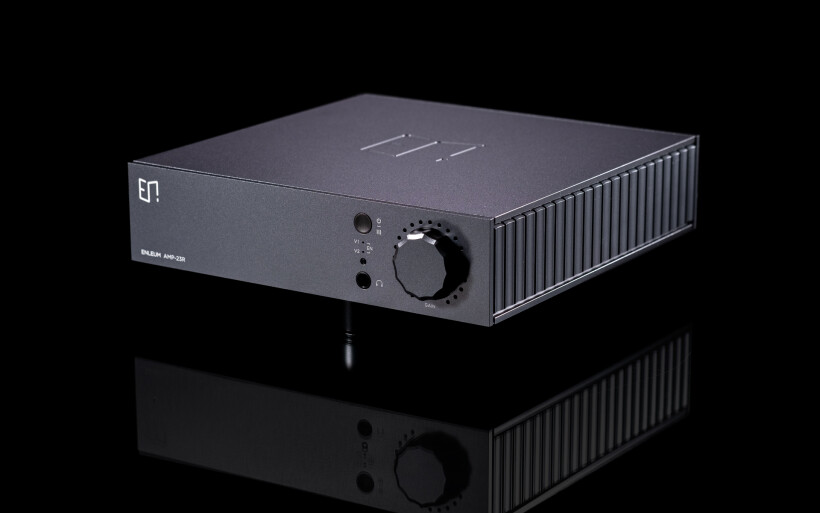 My Bakoon/Enleum comparison started from Eivør Pálsdóttir’s “Verð Mín”, which is my go-to song to track shifts related to vocal range, radiance and partially also bass. The Bakoon had that track’s opening words and subtle sounds travelling from left to right a touch more visible, while the AMP-23R portrayed them weightier and closer. The most pronounced difference however was in the latter’s extra heft that made Eivør’s ethereal voice noticeably fleshier, while meticulous slams on-stage just behind it felt sensibly stronger. These two factors alone made the AMP-13R a touch more explicit and light-footed indeed, but it also felt somewhat innocent. After several back and forths the gutsier more powerful Enleum had its rival in the skinnier corner. This transition wasn’t big but easy to track and even more so later on.
My Bakoon/Enleum comparison started from Eivør Pálsdóttir’s “Verð Mín”, which is my go-to song to track shifts related to vocal range, radiance and partially also bass. The Bakoon had that track’s opening words and subtle sounds travelling from left to right a touch more visible, while the AMP-23R portrayed them weightier and closer. The most pronounced difference however was in the latter’s extra heft that made Eivør’s ethereal voice noticeably fleshier, while meticulous slams on-stage just behind it felt sensibly stronger. These two factors alone made the AMP-13R a touch more explicit and light-footed indeed, but it also felt somewhat innocent. After several back and forths the gutsier more powerful Enleum had its rival in the skinnier corner. This transition wasn’t big but easy to track and even more so later on.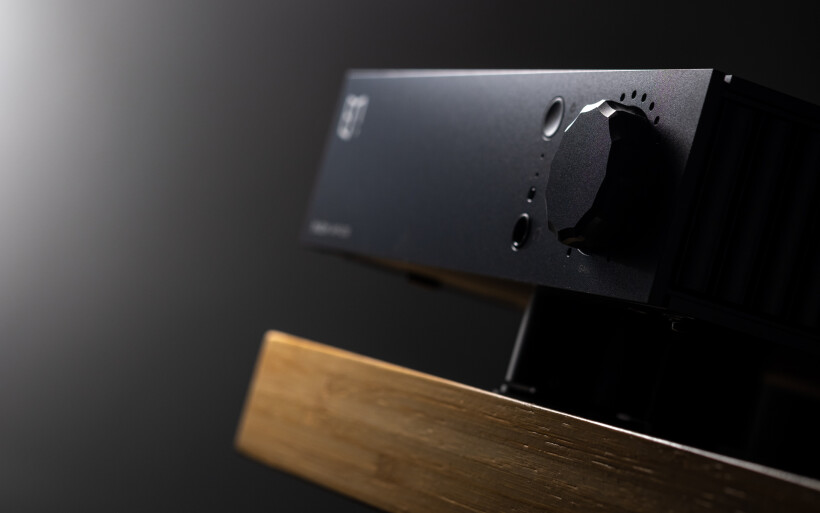 Daemonia Nymphe’s track “Dios Astrapaiou” opens up with a single drum in the middle then guitar on the right then Antonis Xylouris’ aka Psarantonis’ vocal in front. The Enleum sounded a touch darker than its opponent but made all listed ingredients sensibly larger and more powerful for extra intensity and grander more enveloping overall effect. Here I didn’t think that the former had to give away anything in particular to arrive there. Rather, it struck me as capable of landing more gravitational sonics on top of quickness and tactility it already had plenty of. On that score the AMP-23R felt different versus its no longer manufactured predecessor but also audibly better. The more I’d compared them, the more the former’s transition towards earth seemed pronounced and my ears appreciated it.
Daemonia Nymphe’s track “Dios Astrapaiou” opens up with a single drum in the middle then guitar on the right then Antonis Xylouris’ aka Psarantonis’ vocal in front. The Enleum sounded a touch darker than its opponent but made all listed ingredients sensibly larger and more powerful for extra intensity and grander more enveloping overall effect. Here I didn’t think that the former had to give away anything in particular to arrive there. Rather, it struck me as capable of landing more gravitational sonics on top of quickness and tactility it already had plenty of. On that score the AMP-23R felt different versus its no longer manufactured predecessor but also audibly better. The more I’d compared them, the more the former’s transition towards earth seemed pronounced and my ears appreciated it. After auditioning “Agape” from Anastasis by Dead Can Dance all dots finally properly connected to form the full picture. Here the Enleum AMP-23R’s ability to increase spatial mass without penalizing its illuminated core spelled out clear progression over the Bakoon and extra maturity. The former’s greater richness and heft on top of its quick transparent investigative psych profile had to be the highly beneficial side-effects of lower noise floor and here I fully agree with Srajan’s observations. That’s why the AMP-13R came through as more shimmery and lighter, but its successor’s blacker background presented a touch more and weightier bits from “Agape” for extra magnification prowess. The Enleum also pushed sensibly more air my way to feel more impactful in the process, which was quite the achievement on its account. By now it should be clear which amp’s company quick lucid sound|kaos Vox 3afw monitors enjoyed more.
After auditioning “Agape” from Anastasis by Dead Can Dance all dots finally properly connected to form the full picture. Here the Enleum AMP-23R’s ability to increase spatial mass without penalizing its illuminated core spelled out clear progression over the Bakoon and extra maturity. The former’s greater richness and heft on top of its quick transparent investigative psych profile had to be the highly beneficial side-effects of lower noise floor and here I fully agree with Srajan’s observations. That’s why the AMP-13R came through as more shimmery and lighter, but its successor’s blacker background presented a touch more and weightier bits from “Agape” for extra magnification prowess. The Enleum also pushed sensibly more air my way to feel more impactful in the process, which was quite the achievement on its account. By now it should be clear which amp’s company quick lucid sound|kaos Vox 3afw monitors enjoyed more.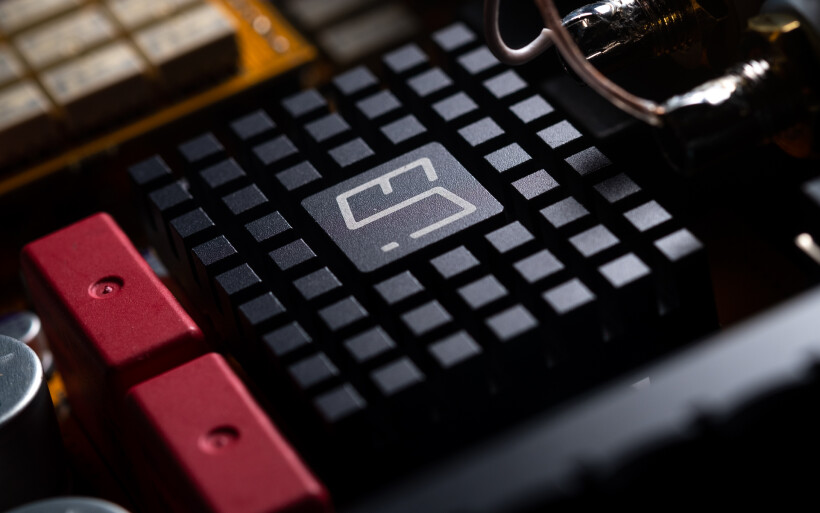 If I had other speakers suitable for Soo In’s compact integrated devils, then perhaps his 25wpc firstborn would’ve emerged as the superior of the two, who knows. That guesswork aside, today’s product struck me as the already very advanced Bakoon’s more refined version that its maker managed to push further by a noticeable margin. Here I should also mention that all the above also applies to HifiMan Susvara headphones as those are the only ones I own. It seems redundant to rewrite my impressions with them engaged as that was already extensively covered here. Suffice it to say, Enleum AMP-23R is no less efficient into that load than the Bakoon, which is quite the stunt on its own right on both these products’ accounts. With the former however that notorious planar type will sound a fair bit gutsier and stronger, which to my ears spells out extra points on the synergy chart and further progression.
If I had other speakers suitable for Soo In’s compact integrated devils, then perhaps his 25wpc firstborn would’ve emerged as the superior of the two, who knows. That guesswork aside, today’s product struck me as the already very advanced Bakoon’s more refined version that its maker managed to push further by a noticeable margin. Here I should also mention that all the above also applies to HifiMan Susvara headphones as those are the only ones I own. It seems redundant to rewrite my impressions with them engaged as that was already extensively covered here. Suffice it to say, Enleum AMP-23R is no less efficient into that load than the Bakoon, which is quite the stunt on its own right on both these products’ accounts. With the former however that notorious planar type will sound a fair bit gutsier and stronger, which to my ears spells out extra points on the synergy chart and further progression.
To summarize, Enleum AMP-23R is as non-casual as the Bakoon was before it. Its industrial styling, petite footprint, flawless metalwork and brilliant overall execution already make that point, but I’m not aware of any other similarly voiced as accomplished hardware that sells for less than thrice its tag. Soo In’s newcomer easily pulls sonics way above that sticker to prove us once more that top shelf performance can wear a fabulously compact sharp suit that’s not even remotely close to the industry’s usual suspects. If 25wpc is plenty for you, Enleum AMP-23R is the integrated/headfi amp to get and silly good effort that runs cooler, sells for noticeably less and is audibly more refined than its predecessor that was the best of the low-power kind. The award below merely highlights that.
Associated Equipment:
- Amplifier: Trilogy 995R, FirstWatt F7, Bakoon AMP-13R
- DAC: LampizatOr Pacific (KR Audio T-100 / Living Voice 300B + KR Audio 5U4G Ltd. Ed.)
- Speakers: Boenicke Audio W11 SE+, sound|kaos Vox 3afw
- Transport: Innuos Statement
- Preamplifier: Trilogy 915R, Thöress DFP
- Speaker cables: Boenicke Audio S3, LessLoss C-MARC
- Headphones: HifiMan Susvara
- Speaker signal conditioning: LessLoss Firewall for Loudspeakers
- Anti-vibration conditioning: 12x Carbide Audio Carbide Bases (under DAC, preamp and speakers)
- Interconnects: LessLoss Entropic Process C-MARC, Boenicke Audio IC3 CG
- Power components: Gigawatt PC-3 SE EVO+/LC-3 EVO, LessLoss C-MARC, LessLoss Entropic Process C-MARC, Boenicke Audio Power Gate, ISOL-8 Prometheus
- USB components: iFi audio Mercury3.0
- Rack: Franc Audio Accesories Wood Block Rack
- Network: Fidelizer EtherStream, Linksys WRT160N
- Music: NativeDSD
Retail prices of reviewed components in EU (excl. tax):
- Enleum AMP-23R: $5’000
- TAKT isolation footers: $500/3
Manufacturer: Enleum


